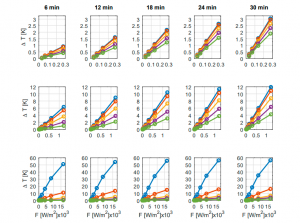This article focuses on the subject of 5G radiation, which is a non-ionizing form of electromagnetic radiation. Since 5g radiation is tiny, it doesn't have the capacity to break the chemical bonds of biological tissue or cause any alteration to cells. It is not known whether the effects of 5G radiation alter the risk of skin cancer, and there is no evidence that has been found to suggest that it could cause other disease.
High-frequency millimeter wave radiation
High-frequency millimeter-wave radiation from mobile phones and wireless networks can cause health effects to human beings. There are many ways that this radiation can cause harm. In some instances radiation may cause damage to a person's DNA. In other instances, it may cause damage to other parts in the human body including the brain.
Recent research has revealed that 5G technology may induce the heating of tissues. This is why researchers from the International Council on Non-Ionizing Radiation Protection (ICNIRP) has asked for a review of existing safety standards for biological and thermal radiation. The current exposure standards are not adequate to protect individuals from overheated heat exposure when exposed to pulsed millimeter wave radiation.
Skin cancer risk
There isn't a definitive answer at present to the issue of whether radiation from 5G causes skin cancer. It is however thought that 5G RF-EMFs behave like high-LET ionizing radiations. As a result, they can produce excessive levels of free radicals that can be found in the skin. The FCC hasn't issued any specific guidelines about the potential dangers associated with 5G technology, and the debate continues.
Although there has been a variety of studies that examine the impact of radio waves that are higher frequency on the human body, they have remained largely limited in scope. However, there is concern over the effects of millimeter-wavelength exposure on oxidative stress and gene expression. These effects may extend to the skin as well as other organs, like the brain.
The impact of other diseases
An innovative new technology in wireless called 5G is rapidly gaining ground However, researchers are advising against the potential health risks it could pose. 5G technology is expected to significantly increase the quantity of electromagnetic radiation found in our environment. This is a concern that has caused debate in several countries which includes Switzerland. In September 2017 390 scientists and doctors were in favor of an end to 5G deployment. This call was ignored by the European Commission, which is responsible for controlling the use of 5G technology.
As a result, more research is needed to determine the health impacts of 5G. In the meantime studies have proven that 5G does not cause the same effects in humans as the radiofrequency from the older mobile networks. Additionally, it does not transmit the new coronavirus type. Additionally it doesn't make people more susceptible to viral infections.
The measurement of exposure
Monitoring exposure to 5G radiation is an essential component of ensuring the safety of 5G networks. There are two ways to gauge exposure. One involves measuring RF power absorbed by human tissues. does 5g emit radiation involves measuring the quantity of radiofrequency energy released through an object. Radiation frequency energy (RF) refers to an electromagnetic field of energy that comes through radio transmitters.

In the United States, the FCC has imposed a restriction on the energy density of 5G mobile devices. The tests are able to measure power density at a distance of several inches, and it is the FCC does not have to measure each beam. However, it is possible to determine the energy density for each beam can be determined through computer simulation. The most likely scenario is selected according to the configuration of each beam.
The study has its limitations
There's been plenty of discussion over whether 5G radiation will affect human health. 5g radiation symptoms , for instance has released a report which concludes that the technology is not likely to cause adverse health effects in the short-term, but there are no studies that have demonstrated long-term negative effects. However, this report also has a variety of issues, including biased reportage.
The power and frequency of the radio waves that transmit energy are determined by the frequency. The energy carried by a millimetre-wave will be the same as that of current radio waves however, they're smaller in size and more suitable for environments with high density because they cannot be blocked by glass or walls. Highly dense urban areas will require many tiny, low-power sites and suburban areas will be better served by 5G sites operating at lower frequencies.
